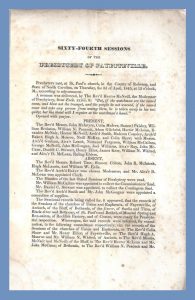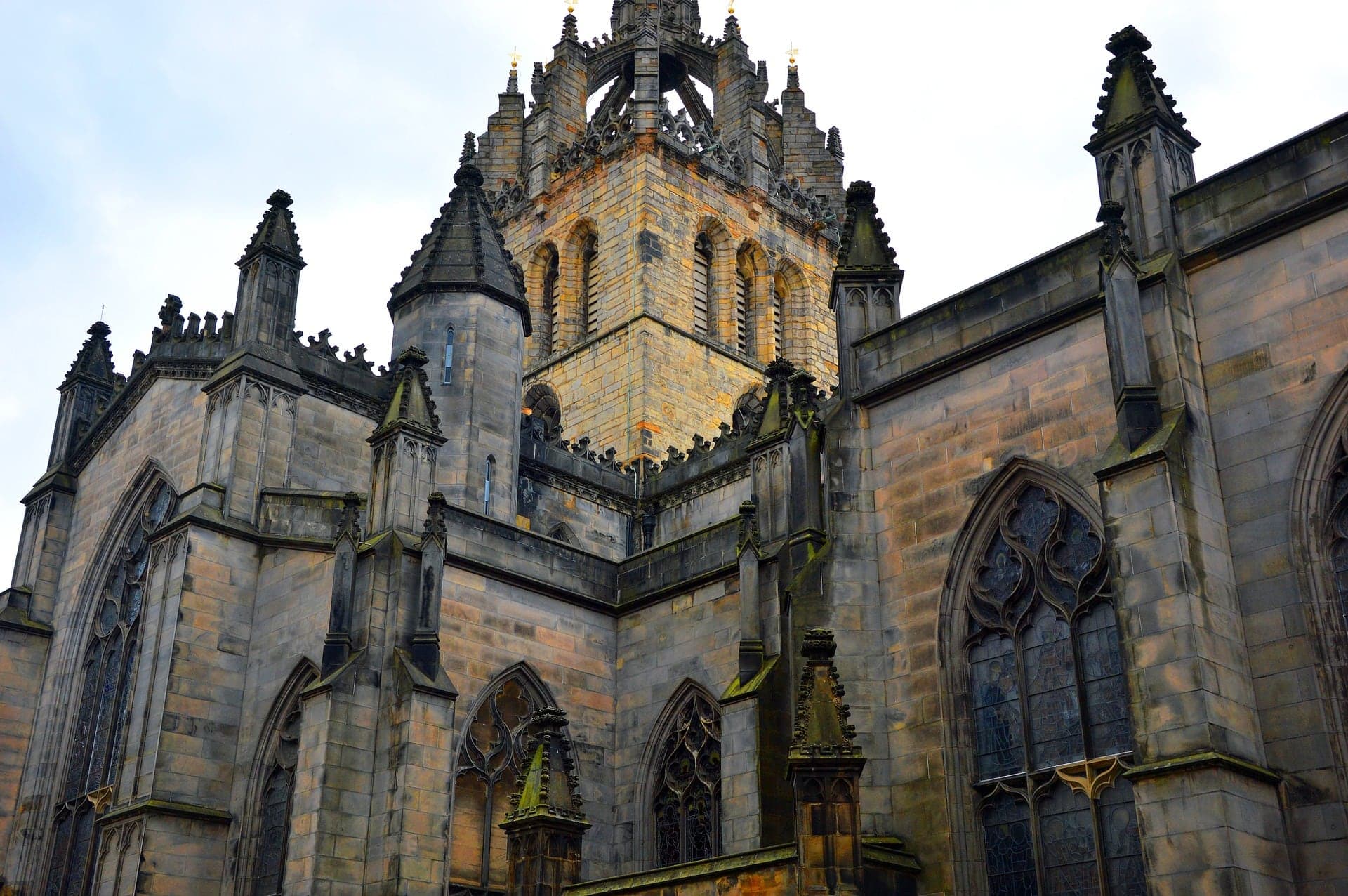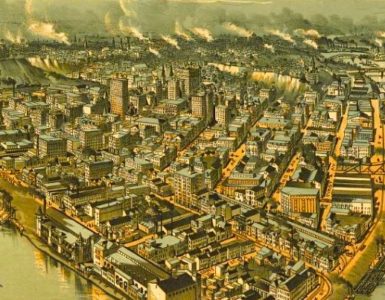 Presbytery meetings of the past followed dockets that were built around a general framework or order of events and those events were recorded in the minutes. Minutes were not a transcription of all that was said during the meeting—like a court stenographer might do—but the clerk of presbytery instead recorded summaries of the actions taken by presbytery and often included associated documents or synopses in the minutes. As a presbytery meeting began, it was called to order by the retiring moderator who then lead the opening worship and delivered the sermon. If the retiring moderator could not attend, the moderator of the previous meeting would fill his shoes, and so on. Next in the course of events was the enrollment or seating of commissioners—ministers and elders—with their names and churches listed in the minutes. In some cases commissioners could not attend and sent letters with their reasons for absence, which the presbytery would either accept or reject. Guests might have been announced with some of them allowed to be seated as corresponding members. In some cases, the presbytery might have to enter an executive session which would require that only commissioners and those that are necessary to the discussion necessitating the executive session remain in the meeting.
Presbytery meetings of the past followed dockets that were built around a general framework or order of events and those events were recorded in the minutes. Minutes were not a transcription of all that was said during the meeting—like a court stenographer might do—but the clerk of presbytery instead recorded summaries of the actions taken by presbytery and often included associated documents or synopses in the minutes. As a presbytery meeting began, it was called to order by the retiring moderator who then lead the opening worship and delivered the sermon. If the retiring moderator could not attend, the moderator of the previous meeting would fill his shoes, and so on. Next in the course of events was the enrollment or seating of commissioners—ministers and elders—with their names and churches listed in the minutes. In some cases commissioners could not attend and sent letters with their reasons for absence, which the presbytery would either accept or reject. Guests might have been announced with some of them allowed to be seated as corresponding members. In some cases, the presbytery might have to enter an executive session which would require that only commissioners and those that are necessary to the discussion necessitating the executive session remain in the meeting.
The retiring moderator’s stint would come to an end when the moderator was elected and took the podium. Presbyteries in the past handled the position of stated clerk—the man who kept the minutes, communicated for the presbytery, and assisted the moderator—in different ways. Some presbyteries elected a clerk that continued in office until he resigned or died, while other presbyteries elected a clerk at each meeting or for a definite period subject to review and reelection, and in some cases a temporary or recording clerk would be elected to assist the stated clerk. Orders of the day were often set early in the meeting. For example, there might be an order of the day for 3:00 to hear the report of a particular committee, which means that when 3:00 arrived the current business was paused so the committee report could be presented. Other orders of the day may have been required for meals, which were always popular and rarely debated, to say the least.
The moderator would select a committee or committees for the examination of sessional records—individual church minutes of the meetings of the elders and ministers—and several other standing committees needed for the business at hand. The presbytery would continue through its docket hearing reports from committees, both the standing committees appointed by the moderator and the permanent or executive committees composed of elected members serving terms—one, two, or more years. Sometimes interdenominational organizations such as a Bible or Sabbath society would make a presentation or appeal. Much of the time of presbytery involved examining ministerial students for candidacy, licensure, or ordination. Other duties included approving budgets, electing executive or permanent committee members, and sometimes dealing with discipline of ministers or discipline cases appealed from the congregations. The report of the standing committee on bills and overtures—the committee that directed or made recommendations to the presbytery regarding documents, appeals, correspondence, and other items requiring presbytery action—could sometimes require considerable time on the floor of a meeting. Much of presbytery work involved routine actions, but decisions involving discipline, overtures, revision of church standards, and doctrinal fidelity could produce animated and sometimes complex debates. The meeting ended with the setting of the date and location of the next stated meeting—a meeting that is held on a schedule such as quarterly or semiannually—but sometimes a pro re nata or called meeting might have become necessary between stated meetings to handle some business of urgency. Another final action was the report of the committee of resolutions or thanks, which composed a statement of the presbytery’s gratitude for the use of the facility of the meeting’s host church or other entity. Commissioners would exit the place of meeting after a busy day or more of sessions, then mount their horses, climb in their buggies, or walk to their homes anticipating some rest and hot food.
Depending on the particular Presbyterian denomination, terminology and practices vary but the general pattern of business is very much alike. The nuances of order and rules from one presbyterian denomination to another are provided in their document for regulating how the work of the church is ordered; the titles of these publications might be “Form of Government,” “Book of Church Order,” or some similar designation.
This description of a presbytery meeting from years past does not cover every jot and tittle of the events, but it does present a general pattern for the presbytery meetings of not only the past but also those of today. Even though session, presbytery, synod, and general assembly meetings are steps up the ladder of size with respect to the geographical bounds of each court, the meetings of each one follows a similar pattern even though their duties and limitations will differ at some points.
BY BARRY WAUGH
Notes–This article was revised and corrected on September 23, 2016.





